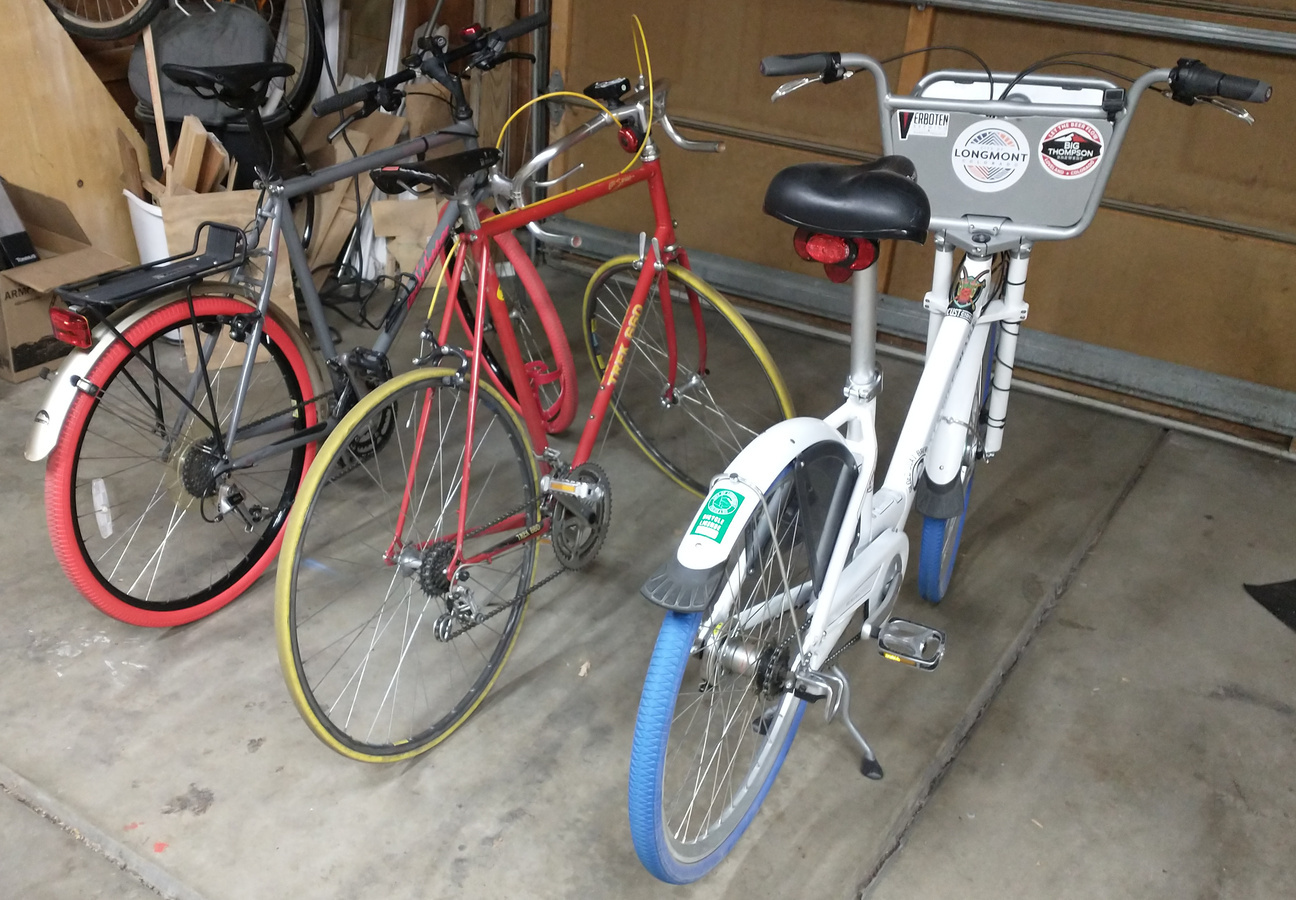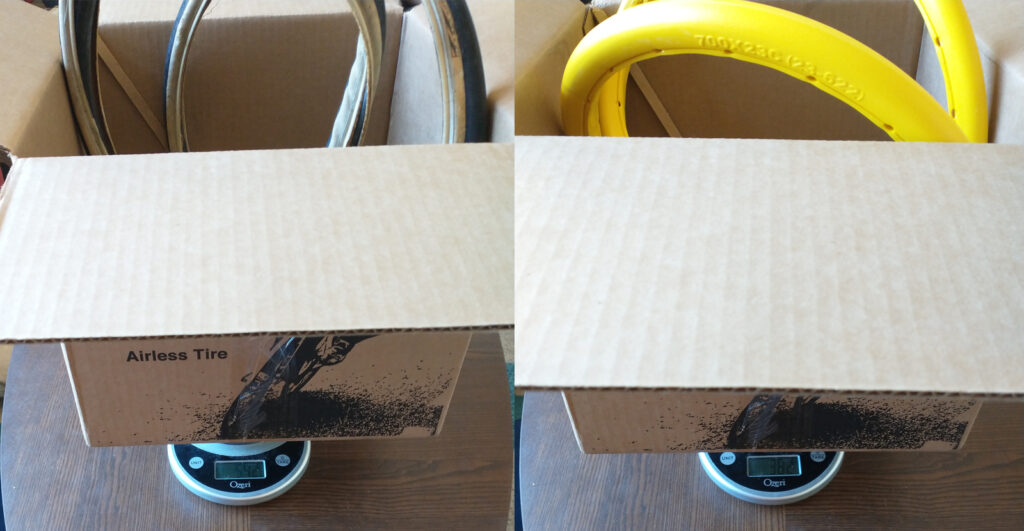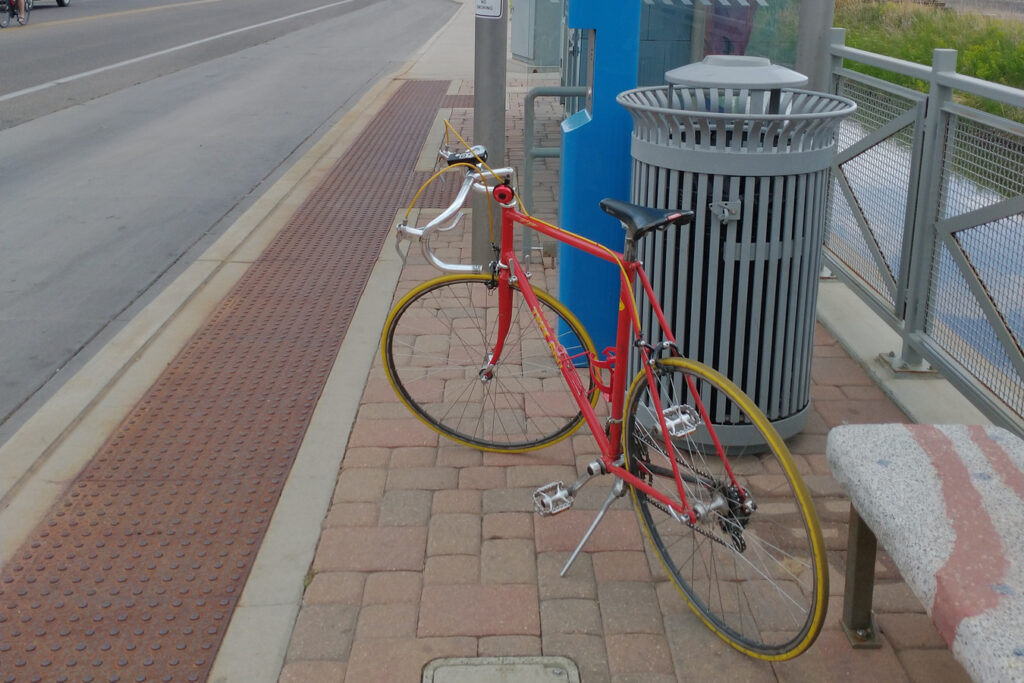Last summer I blew out the tires on my road bike. They were kind of thin, and commonly punctured by the tack-shaped goat head thorns that we have everywhere in Loveland, CO. I was so sick of patching tubes every few weeks that I wanted to try something new, so I did some research and ordered solid road bike tires from Tannus. There are other options for solid bike tires right now, but for amateur non-competitive bicyclists, I think the ones from Tannus are the best deal in the US. This post is not sponsored by them, just some free publicity, I guess. Fast forward to now, I am on the way to replacing all of my bicycle tires with solid tires, and I would recommend them to everyone. This post will cover what solid tires are and why they are awesome. I will have another post explaining how to install these in particular.
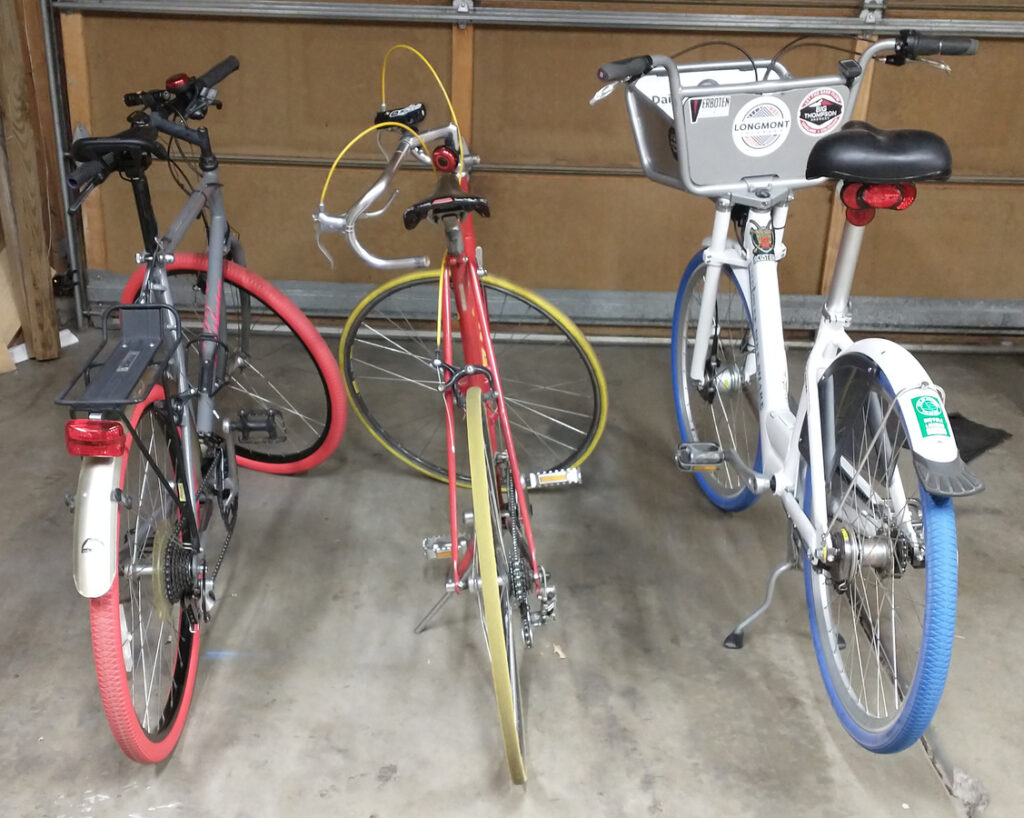
Environmental impact of vehicle tires
I started writing a whole article on scrap tires, pulling information from the EPA archives, the U.S. Tire Manufacturer’s Association, and reporting done by the Colorado Sun on “Tire Mountain” in Colorado. I stopped when I realized we throw away something like 260 million vehicle tires per year (as of 2019 – 2019 U.S. Scrap Tire Management Summary, U.S. Tire Manufacturers Association), and I think any sensible person will agree that is too damn many.
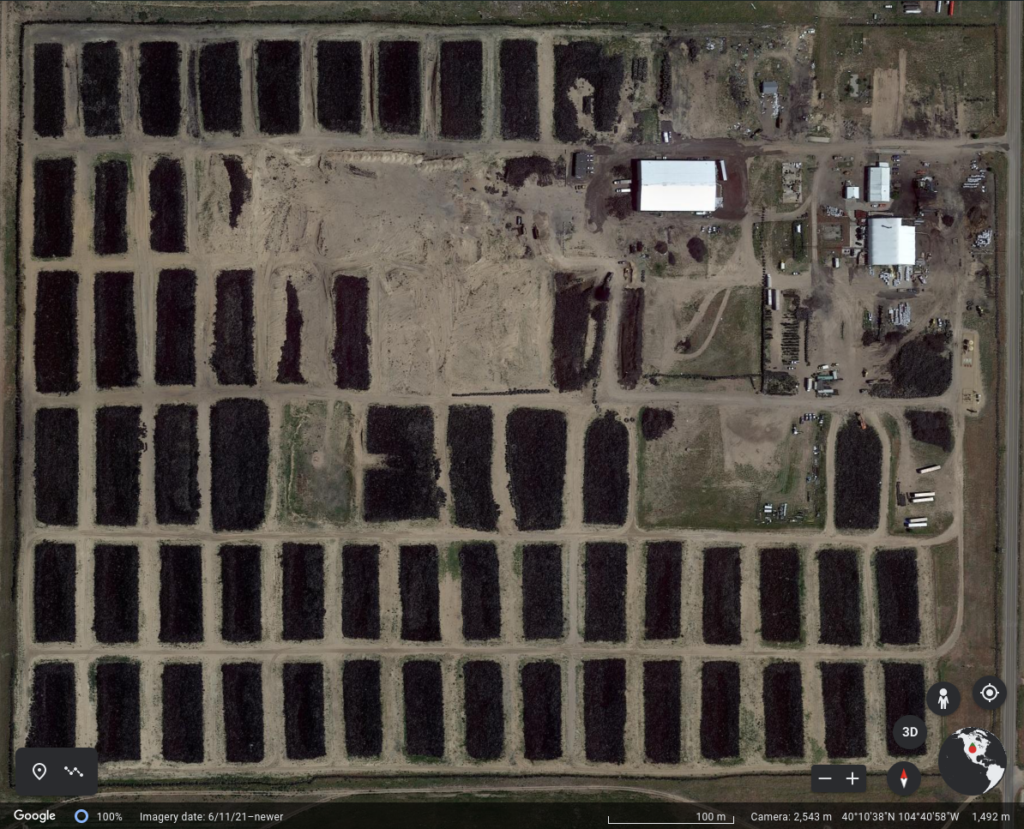
But that doesn’t include bicycle tires, and it definitely doesn’t include inner tubes, neither of which should be thrown out in household trash. I bet most bicyclists, like me, have a pile of rubber stashed somewhere that grows bigger whenever they break an inner tube.
Solid tires prevent waste by surviving many of the incidents that would total inflatable tires and tubes. They’re basically a rubber foam designed to have a compression modulus that makes them feel similar to an inflated tire, but with fewer failure modes. They also last a very long time: Tannus warranties theirs up to 5000 miles or 2 years, which is on the upper end of life mileage for bicycle tires.
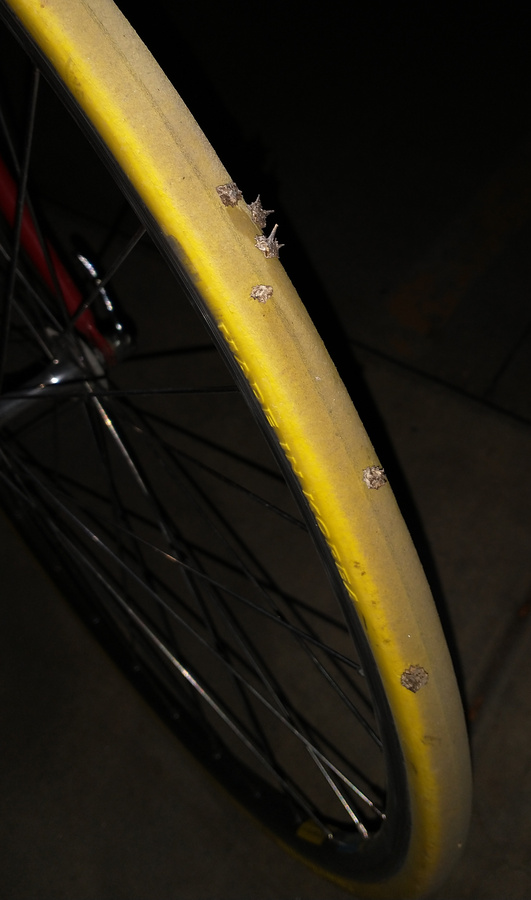
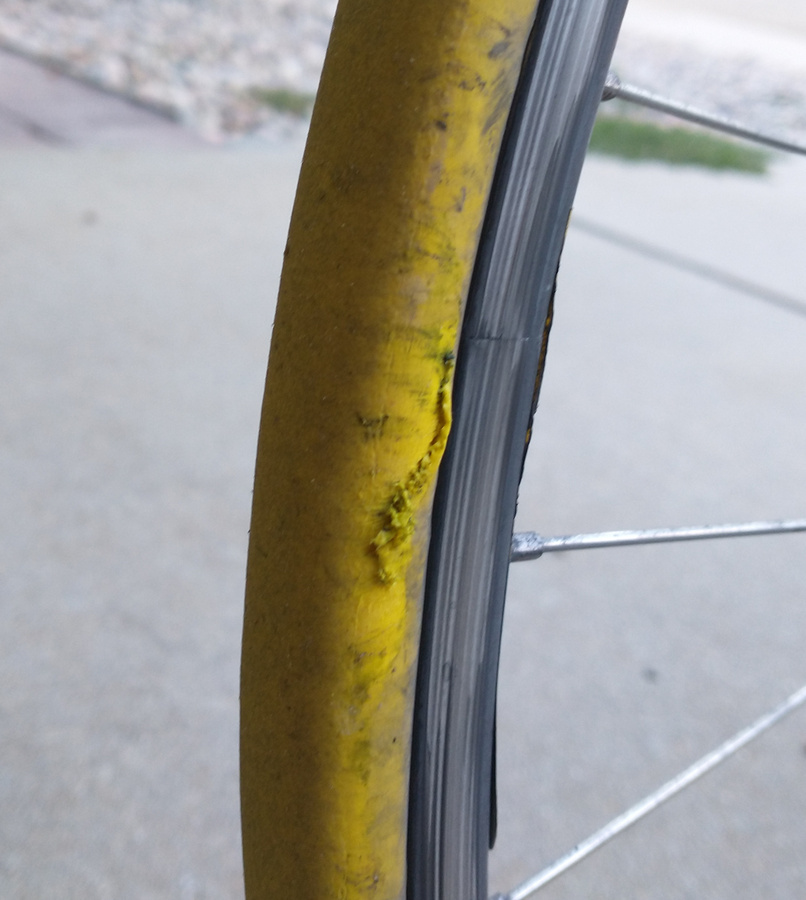
Misinformation about solid tires
Some time after I installed my first solid tires on my road bike, I was riding down a hill and dropped my chain off the inside of my rear cassette, where it sawed straight through two spokes before I could stop. I am very bad at truing wheels, so I brought the bike to a couple of shops. I expected to answer a question or two and have a chuckle, but instead I learned that there is a lot of misinformation about modern solid tires in bicyclist communities.
One shop took my bike, then later called me because they refused to work on any bike with solid tires. The mechanic told me he thought that the solid tires had caused my spokes to break (even though I had told them the cause and there were saw marks on them), and that solid tires were bad because they cause warping and dents in wheels. He had seen it every time a bike had solid tires, he said. When I pressed him and asked which solid tires he had used, the mechanic admitted that he had never actually used or worked on a bike with solid tires before.
Misconceptions I have heard about solid tires
Here are the misconceptions about solid tires that I have heard more than once.
They are heavy and will slow me down
This might be true if the tires were very thick or if you compare them against high-end tires, but I weighed my solid road bike tires against my old (very worn) road bike tires and the tubes and found that the new tires were actually a bit lighter than the old setup (even though most of the rubber was gone). My guess is that the average person won’t notice a difference.
They will bang up your rims like a trash can in a Stomp concert
Challenge accepted. I have run my road bike down a washed-out dirt hill covered in rocks straight into a concrete curb that I didn’t see coming. I take every shortcut I think will work on that thing, including gravel railroad embankments. I have seriously tried, and I have not dented my rims.
Installing them wrong (like I have done) can warp wheels out of alignment by applying too much force, but that can be fixed with spoke adjustments. Inflated tires can apply a radial force to the rim (against the bead, which holds the tires in place) that can actually straighten out the rim when the spokes are a bit loose. I think that this misconception might come from wheels that weren’t properly adjusted to begin with. Truing wheels is really hard, and I am willing to pay the best-reviewed bike shop in my area to do it correctly for me.
My favorite part about solid tires is that I can take shortcuts without worrying about thorns or shards of glass, so I bounce my road bike over rocky dirt access roads all the time (which Tannus does not recommend), and it’s fine! They aren’t intended for aggressive offroading, as explained in the next misconception, but that’s not because of the rims.
They aren’t grippy and I always seem to be slamming on my brakes
I think the idea behind this one is that people think they won’t compress as much as pneumatic tires, so there’s a smaller area of contact for friction. The Tannus solid tires I have do compress about as much as the air ones I would use at full pressure. While the grip isn’t top-notch, I would put them up against any other road bike tire you can get for $45-70.
That said, while they grip pavement well, Tannus doesn’t make any tires with particularly aggressive tread (which makes sense when you think about how they are intended to have a very long life), so I would hesitate to use them for aggressive offroading. NASA had solid tires developed for aggressive offroading, but they are sadly outside my budget.
They can’t be removed or serviced, and I like to take things apart for no reason
No, the Tannus solid tires can’t be removed for service, but why take them off? Spokes can be replaced and the wheel can be trued with them on. I haven’t had to try removing the tires yet, which is kind of the point: they reduce the need for regular maintenance.
Put solid tires on your commuter bike
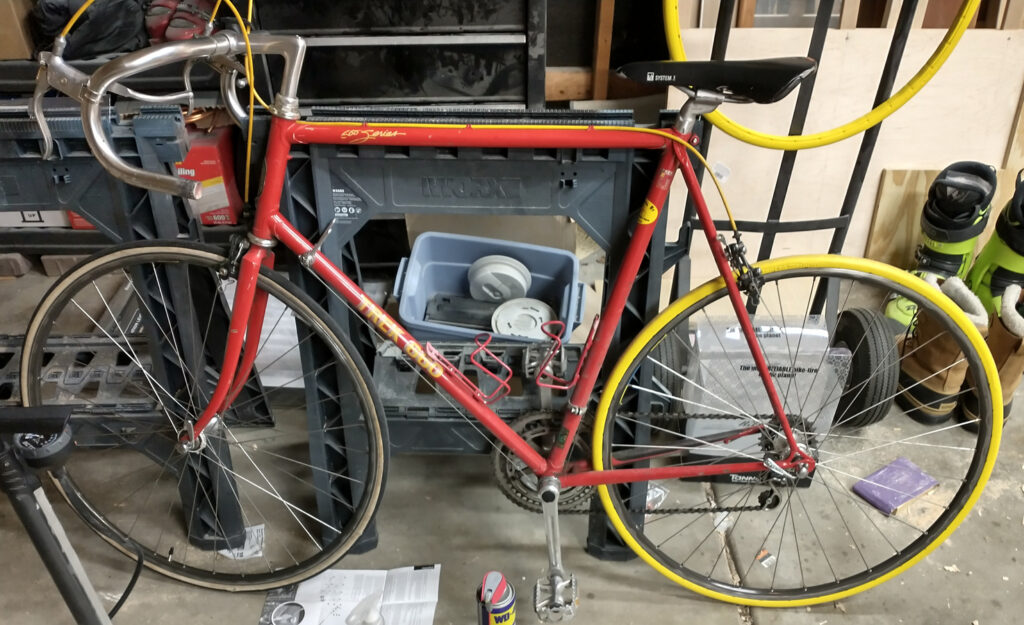
Most bicyclists that I know that ride nice bikes also have one or two beaters that they use for commuting. Your commuter really just needs to roll and stop. It’s unlikely to spend much time over 20 miles per hour, and almost no time off-road. All of my bikes fall into this category.
A commuting bike is great if it is reliable. It sucks discover you have a flat tire when you’re late for work, or to get home from work late because you had to patch a tube from a thorn. It also sucks to have to pump up your tires every few days. Keeping the maintenance down is the key here, so use low-maintenance tires.
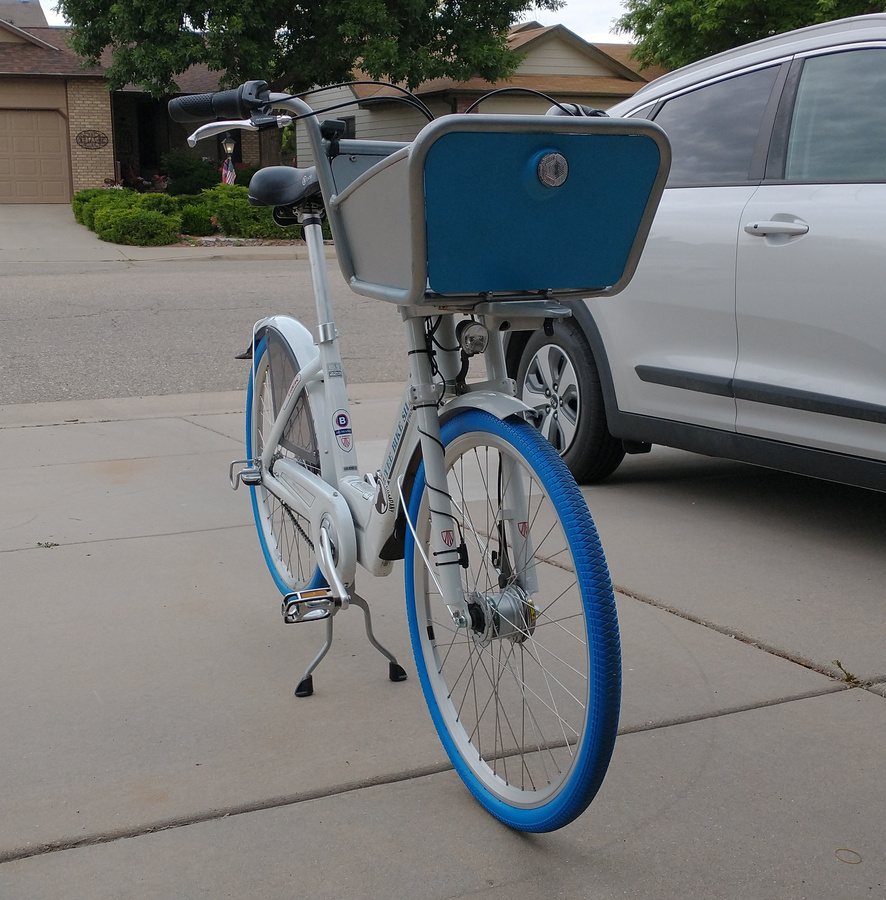
Earlier this year I bought a used bicycle (“Daisy”) at government auction. It has gone 116 miles since I installed solid tires, and my main bicycle (“Royale with Cheese”) has traveled over 370 miles this year with solid tires. I recently bought some solid tires to put on a mountain bike that my grandpa gave me. Installing them in the cold winter was an experience, but more on that in another post (see “doing it wrong”). I love solid tires, and I would highly recommend them to anyone who wants a more reliable bicycle.
I know there are companies outside the US selling other styles of airless tires, so I’ll have to try some of them out once I wear through these, but I have a way to go still.
Measuring and installing these Tannus tires is a little tricky, so I will cover that in another post.

